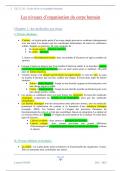College aantekeningen
Lecture Notes - Clinical Immunology - HIV & Cancer
- Instelling
- Vrije Universiteit Amsterdam (VU)
clinical aspects of HIV (including pathogenesis, diagnosis, and treatment), HIV vaccination, brief introduction of immunotherapy in cancer, primary immunodeficiency
[Meer zien]













